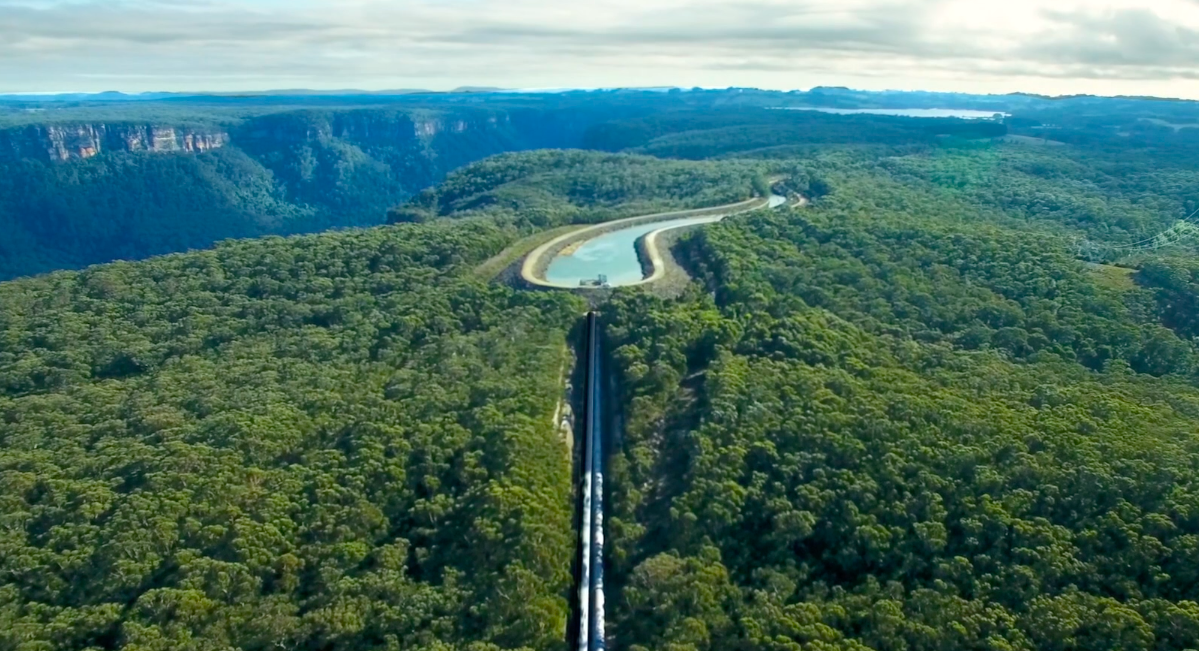There are more than 20 pumped hydro projects in five Australian states at various stages of development, with some in initial assessment phases and others under construction. If these projects go ahead, Australia will be well on the way to have a national grid that could rely almost entirely on renewables, finds a new study from the Australian National University (ANU).
“It’s really a game changer. It destroys any argument that solar and wind can’t provide the baseload power needed to keep the lights on in eastern Australia,“ says researcher Jamie Pittock.
Pumped hydro stores energy for when the grid needs it by pumping water uphill when demand is low and then releasing it down pipes through a turbine to generate electricity when demand is high. Optimal locations feature pairs of dams with an altitudinal difference of more than 250m, and exclude residential areas, national parks and other sensitive places.
Pittock’s paper, which has been published in Australian Environment Review, outlines the environmental implications of this system. He says it does throw up some unusual challenges, as people living in rural areas could be displeased to see a reservoir being built on top of the nearest mountain. On top of that, a lot of high elevation areas that would otherwise be suitable have to be ruled out as they are a part of national parks or host culturally significant sites. Other locations are too far away from water or existing electricity transmission lines.
But there are some sites that are really promising, such as the old gold mines under Bendigo, Victoria. They are sucking contaminated water up to the surface and feeding it back down the mine shafts to doubling existing pumped hydro schemes and a “green” steel mill.
“Estimates are that we would need about 20 big PSH facilities to back up the entire national grid. It’s partly a judgement call about how much risk you want to take in terms of the reliability of the electricity supply,“ Pittock said.
Pumped hydro recently grabbed the limelight as the federal government announced its plans to underpin two major projects. It pledged $1.38 billion in funding for the Snowy 2.0 pumped hydro expansion, along with $56 million for the Marinus Link project, part of Tasmania’s Battery of the Nation program, which would provide a second interconnector across Bass Strait to increase the availability of the state’s hydro resources on the mainland.
While analysis showed that additional energy storage capacity makes financial sense in the light of coal retirements, and for the Marinus Link well ahead of schedule, it has been said that the potential of pumped hydro projects can be fully exploited only when they operate in concert with renewables.
“Don’t talk about Snowy 2.0 being renewable, when every time it pumps, it will be using off peak power from the dirty power stations we have in NSW today. They need to close, they fall over when the going gets tough in extreme weather, it’s time to move on into the 21st century with renewables, so Snowy 2.0 can truly be a renewable project,” the Climate Council’s Andrew Stock observed in a statement.
The same is needed for the Marinus interconnector to stack up. In an initial study, TasNetworks estimated the capital cost of the Marinus Link would range from $1.3 – $1.7 billion for the 600 MW link or $1.9 – 3.1 billion for 1,200 MW of capacity. Noting that the project is promising, ARENA indicated that a second interconnector could become economically feasible in the early 2030s or as early as the mid 2020s, depending on when existing coal fired power stations retire.
“The second interconnector with Tasmania only works if the coal closure rates increase and we have an over 50% reduction in emissions from the electricity sector – not the 26% that the government has been charting,” Ben Oquist, executive director of The Australia Institute, stated after the funding announcement.
The Marinus Link has emerged as an early winner of the Underwriting New Generation Investment Program. Prime Minister Scott Morrison has indicated that there is a willingness to funnel taxpayers money into the project and Tasmania’s state government has promised to allocate $30 million for Hydro Tasmania to narrow the number of potential sites for the interconnector from 14 down to three.
This content is protected by copyright and may not be reused. If you want to cooperate with us and would like to reuse some of our content, please contact: editors@pv-magazine.com.




1 comment
By submitting this form you agree to pv magazine using your data for the purposes of publishing your comment.
Your personal data will only be disclosed or otherwise transmitted to third parties for the purposes of spam filtering or if this is necessary for technical maintenance of the website. Any other transfer to third parties will not take place unless this is justified on the basis of applicable data protection regulations or if pv magazine is legally obliged to do so.
You may revoke this consent at any time with effect for the future, in which case your personal data will be deleted immediately. Otherwise, your data will be deleted if pv magazine has processed your request or the purpose of data storage is fulfilled.
Further information on data privacy can be found in our Data Protection Policy.